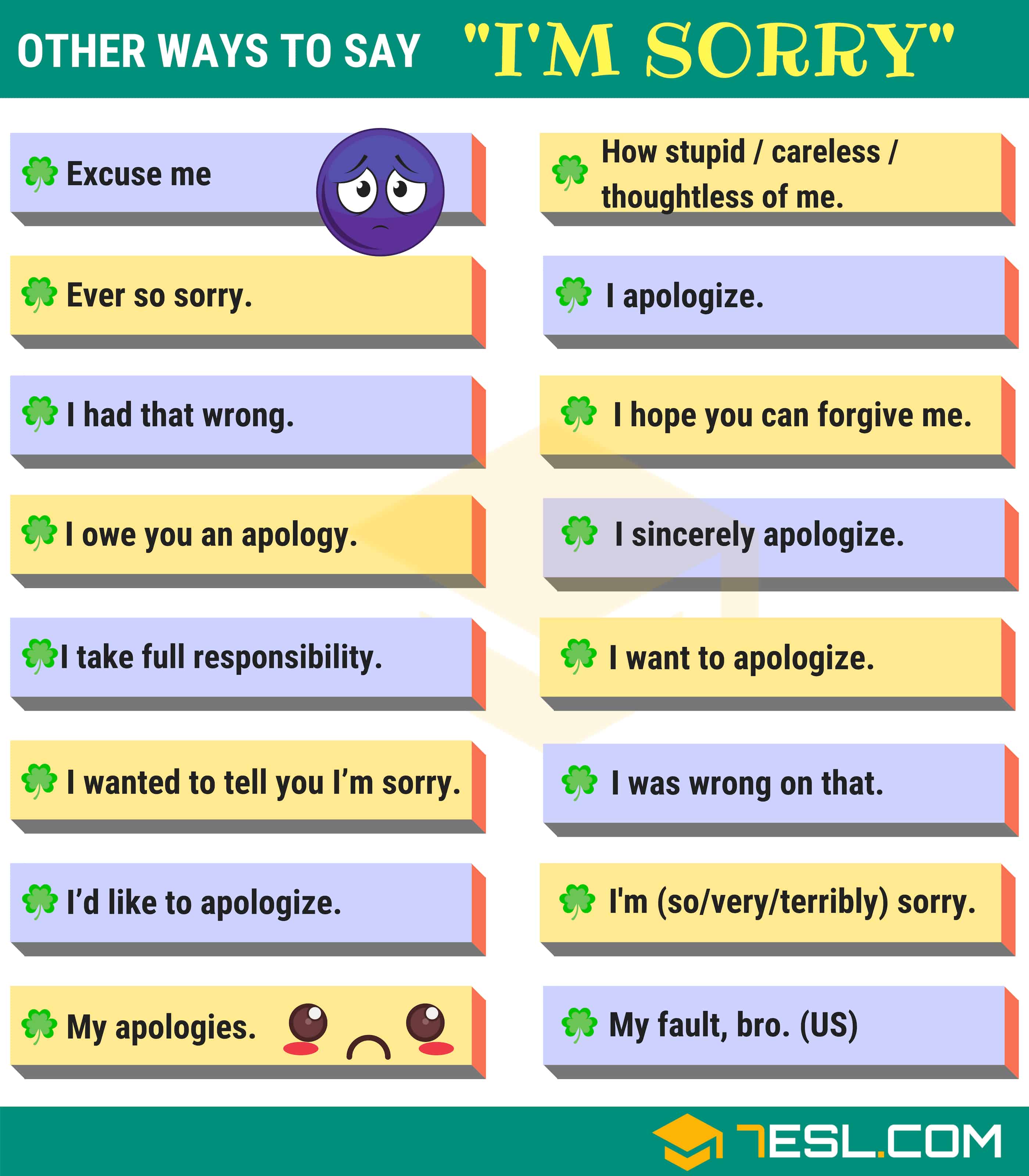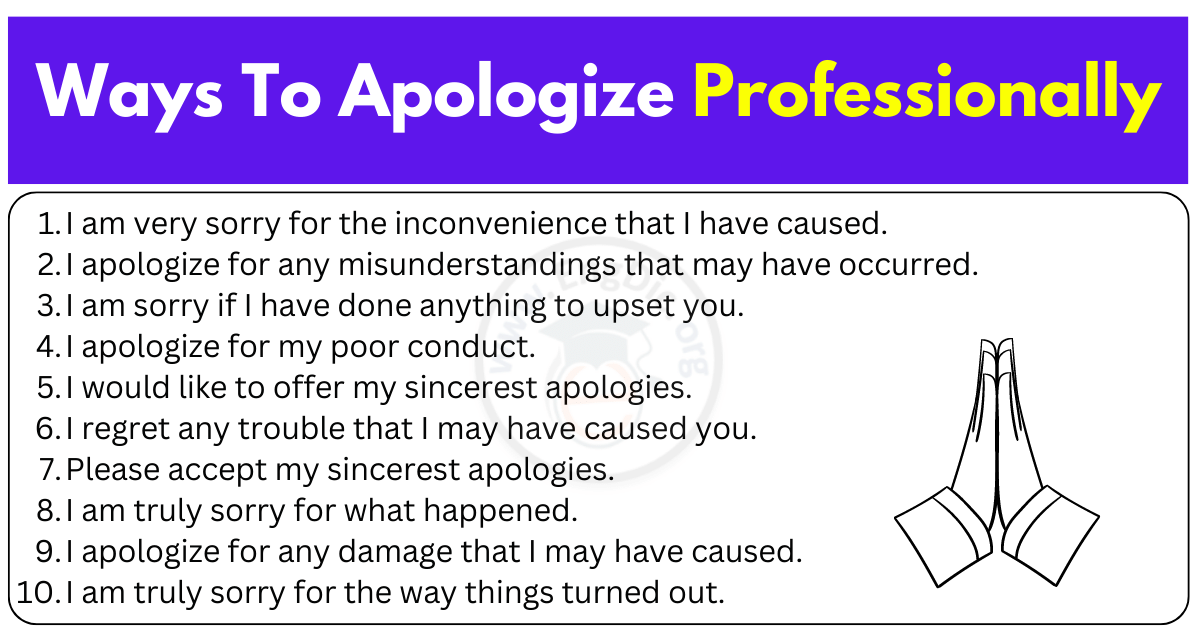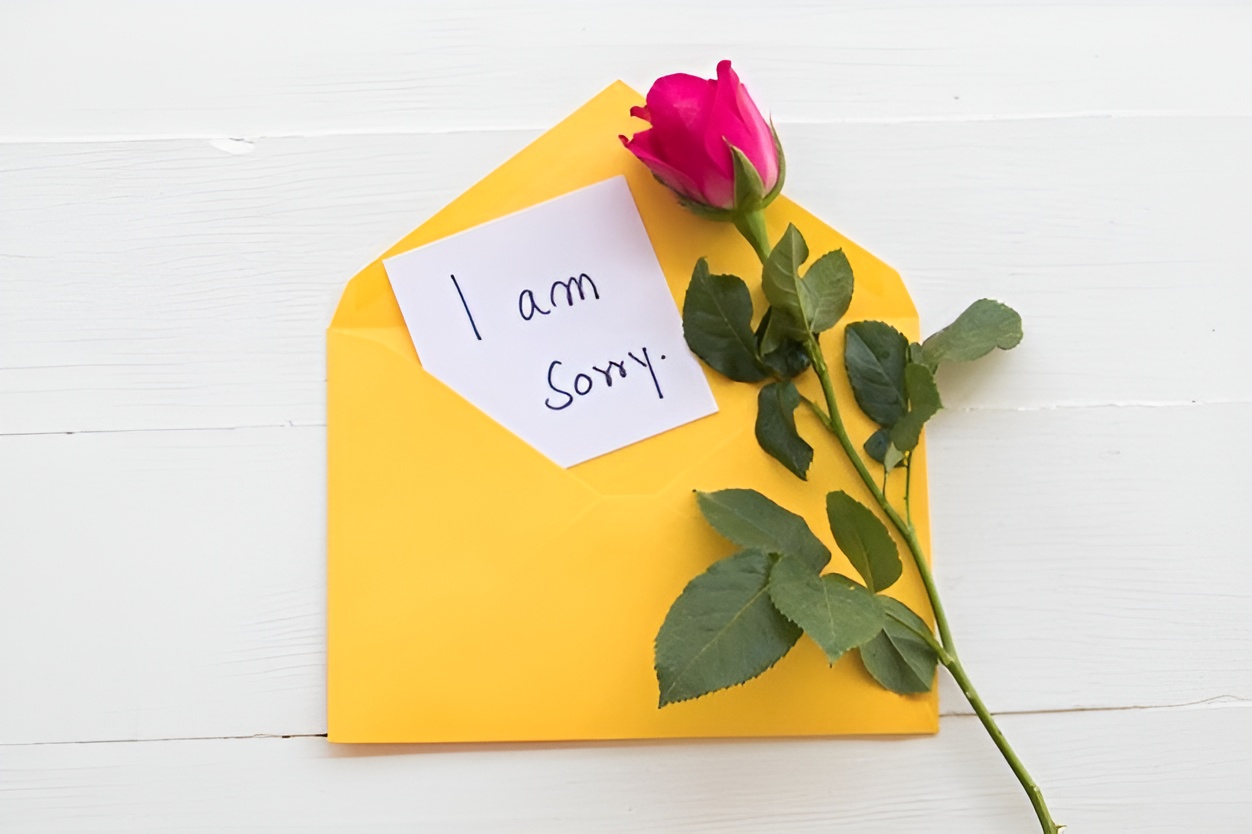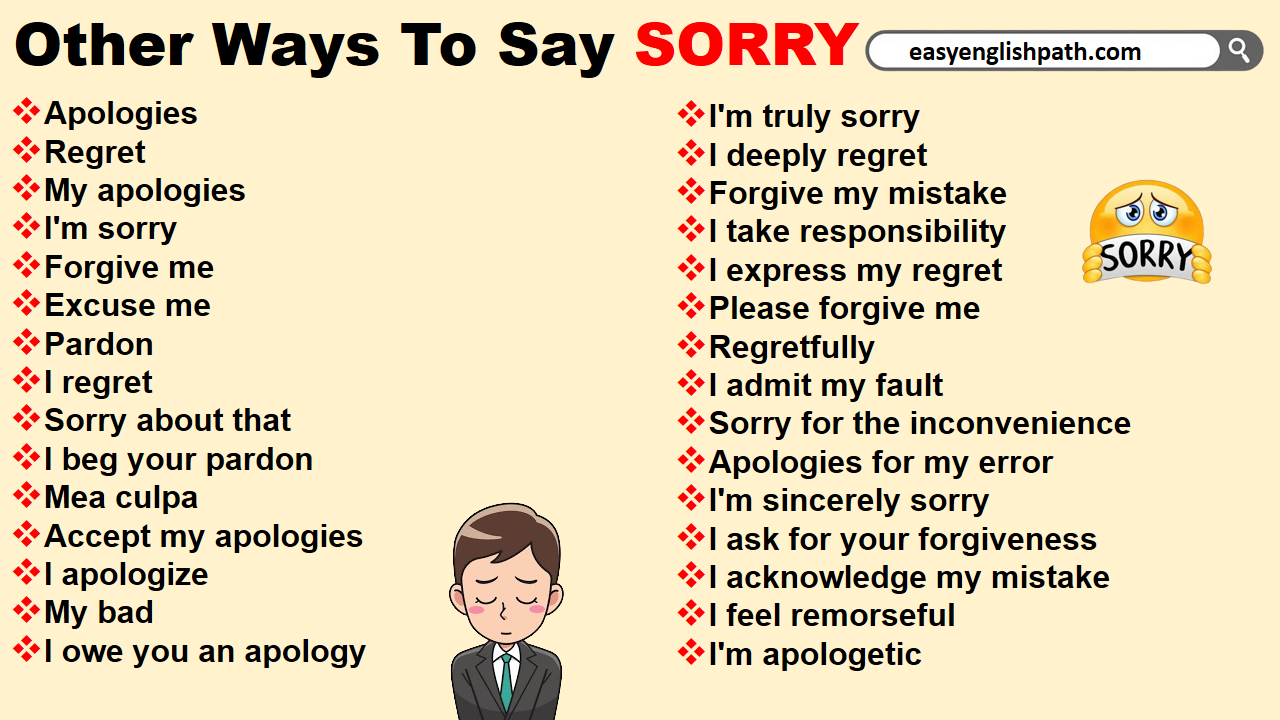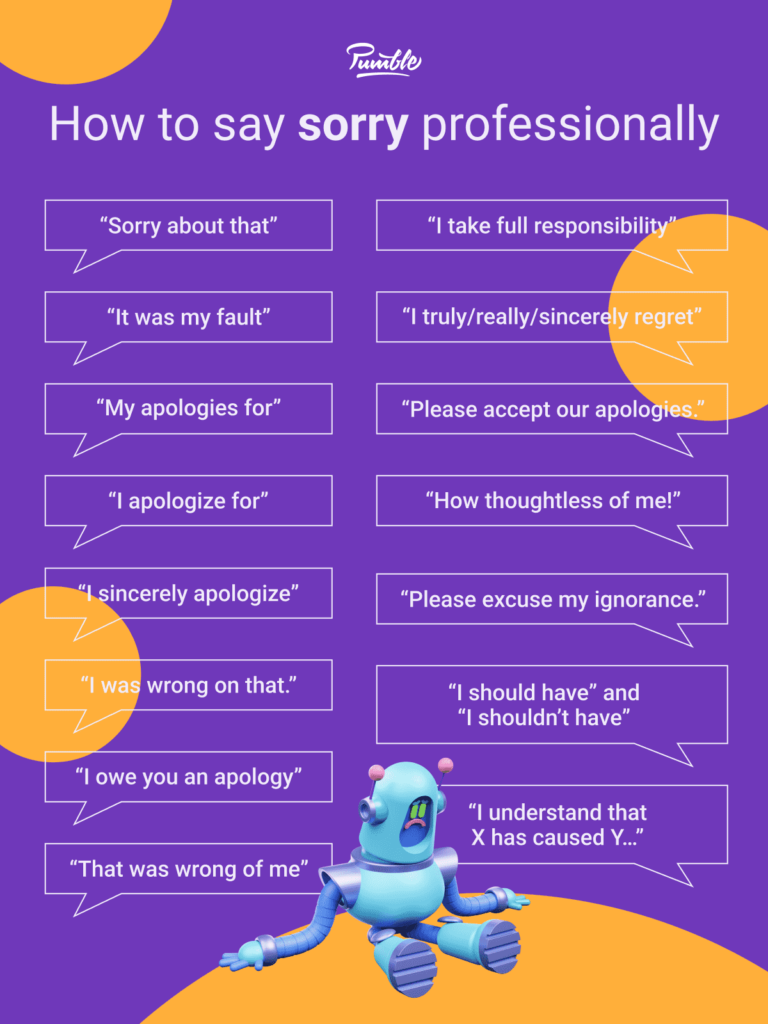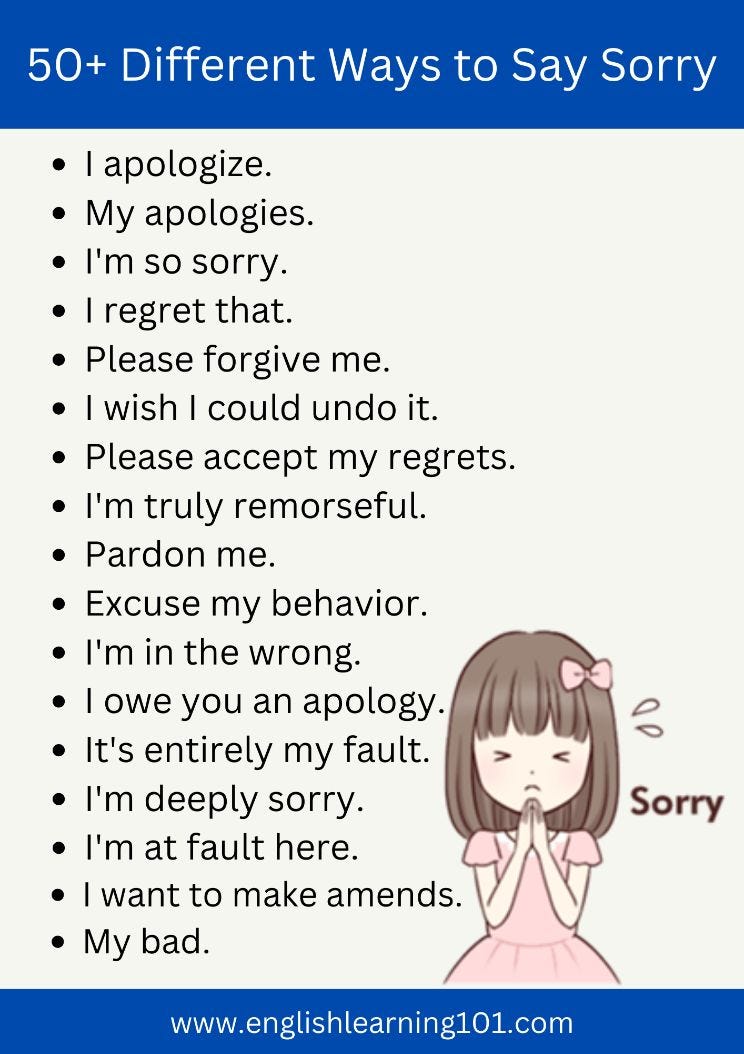Different Ways To Apologize Without Saying Sorry
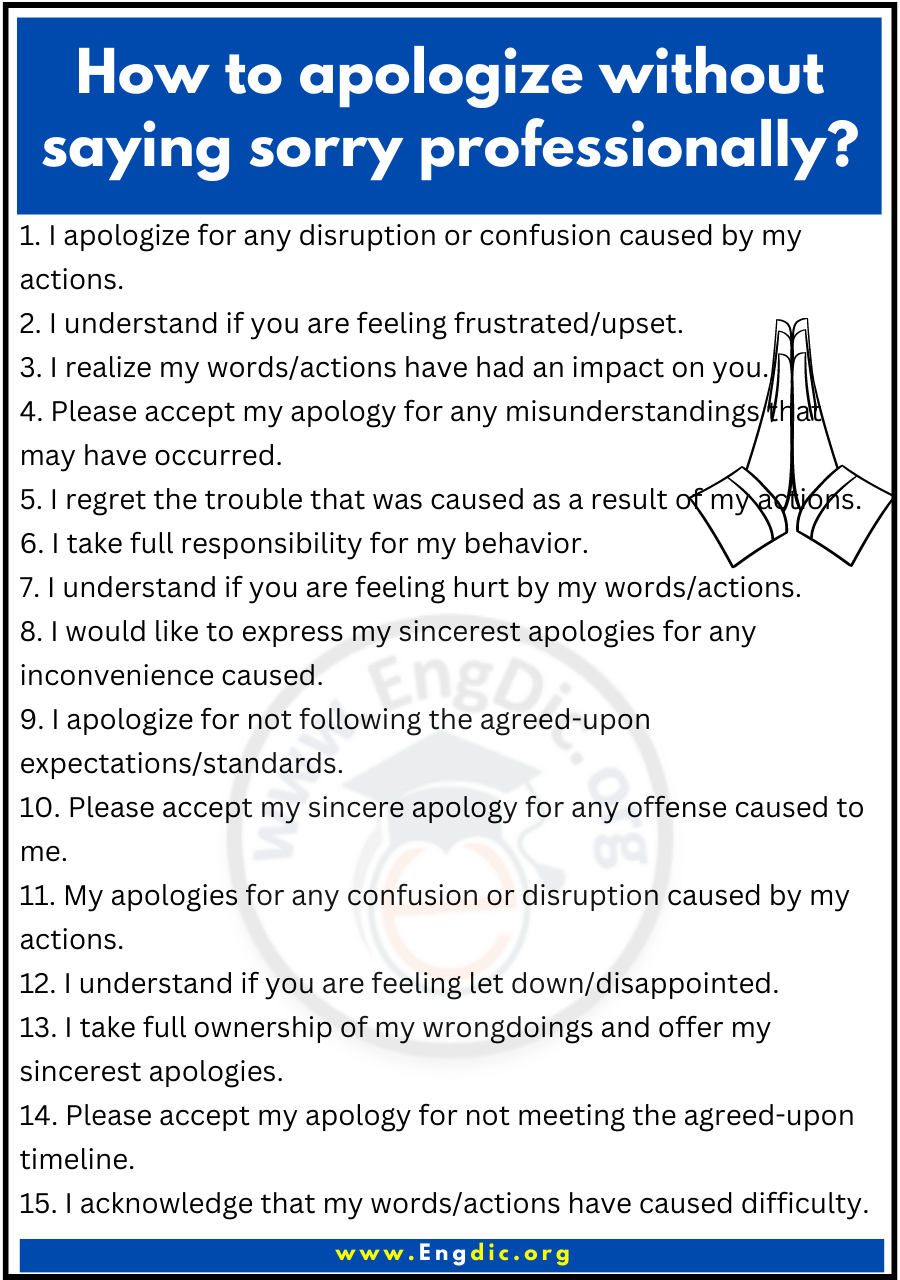
In the delicate dance of human interaction, apologies serve as crucial balms, mending fractured relationships and acknowledging missteps. But what happens when the words "I'm sorry" seem insufficient, disingenuous, or simply impossible to utter? Experts suggest exploring alternative routes to reconciliation that prioritize genuine remorse and a commitment to positive change, even without the explicit declaration.
This article delves into the nuances of apologizing without saying “sorry,” exploring actionable strategies and examining the psychological underpinnings of effective non-apology apologies. We will analyze techniques that emphasize understanding, empathy, and tangible reparations, drawing insights from conflict resolution specialists and relationship experts. The goal is to equip readers with a framework for navigating conflict and rebuilding trust through demonstrably sincere actions.
Understanding the "Why" Behind the Silence
Sometimes, the inability to say "I'm sorry" stems from deep-seated psychological barriers. Ego, fear of vulnerability, or a perceived admission of weakness can all contribute to this reluctance. Understanding these underlying factors is the first step in finding an alternative path to apology.
According to Dr. Harriet Lerner, a renowned psychologist and author of "The Dance of Connection," acknowledging one's own role in a conflict is paramount. This involves self-reflection and an honest assessment of one’s behavior.
Alternative Apology Strategies
One of the most effective non-apology strategies is to explicitly acknowledge the other person's feelings. Instead of saying "I'm sorry I hurt you," try, "I understand that my actions caused you pain, and I can see why you feel that way." This demonstrates empathy and validates their experience.
Another approach involves focusing on taking responsibility for your actions. This could involve stating, "I realize that my decision to do X had a negative impact on you, and I take full responsibility for that." This focuses on ownership and accountability without explicitly using the "sorry" word.
Furthermore, offering a commitment to change can be incredibly powerful. By saying, "Moving forward, I will make sure to do Y to prevent this from happening again," you demonstrate a willingness to learn from the experience. This highlights a proactive approach to preventing future harm.
The Power of Active Listening
Active listening is a cornerstone of effective communication, especially when navigating difficult conversations. It involves paying close attention to what the other person is saying, both verbally and nonverbally. It involves demonstrating attentiveness through eye contact, nodding, and summarizing their points to ensure understanding.
By actively listening, you can better understand their perspective and tailor your response accordingly. This can lead to a more meaningful and impactful interaction.
Making Amends Through Action
Sometimes, words are simply not enough. Actions speak louder than words, and offering to make amends can be a potent form of apology. This could involve repairing the damage caused, offering assistance, or providing a gesture of goodwill.
For example, if you missed an important deadline and caused someone extra work, you might offer to help them catch up or take on some of their other responsibilities. The key is to demonstrate a genuine desire to rectify the situation and alleviate their burden.
Cautions and Considerations
It's important to recognize that not all non-apology apologies are created equal. A poorly executed attempt can backfire, leaving the other person feeling even more dismissed or invalidated. Sarcasm, defensiveness, or a lack of sincerity can all undermine your efforts.
According to a study published in the Journal of Social Psychology, perceived sincerity is a critical factor in the effectiveness of any apology, regardless of whether the word "sorry" is used. A genuine expression of remorse and a willingness to take responsibility are essential for rebuilding trust.
Ultimately, the most effective approach will depend on the specific situation and the individuals involved. It is advisable to carefully consider the context and tailor your response accordingly.
Looking Ahead: Cultivating a Culture of Accountability
The ability to apologize effectively, whether through words or actions, is a vital skill for building and maintaining strong relationships. By fostering a culture of accountability and encouraging open communication, we can create environments where apologies are not only accepted but also valued.
This requires a shift in perspective, viewing apologies not as an admission of weakness but as an opportunity for growth and connection. By focusing on empathy, understanding, and a commitment to positive change, we can navigate conflict and build stronger, more resilient relationships.
In conclusion, while the words "I'm sorry" hold significant weight, they are not the only path to reconciliation. By embracing alternative strategies that prioritize genuine remorse, responsibility, and a commitment to change, we can navigate the complexities of human relationships and build stronger connections based on trust and understanding.
